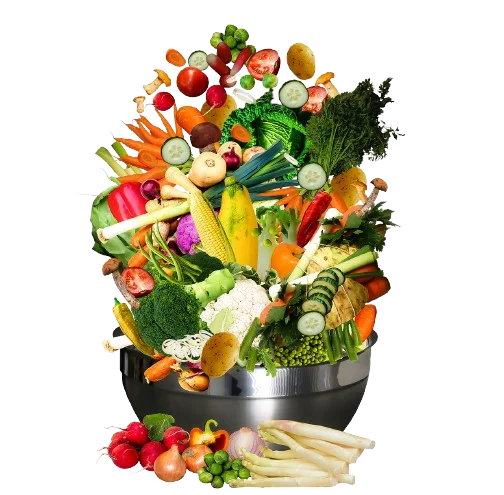Table of Contents
Introduction:
Pursuing a stable and dynamic life, and getting the right sustenance can never mean more. This comprehensive aide anticipates examining the intricacies of growing food, offering valuable insights into promoting a healthy and supportive lifestyle. From understanding the importance of real sustenance to adopting the right approach, each part reveals the keys to unlocking ideal prosperity. Techniques for Getting the Right Nutrition

Unraveling the Importance of Getting the Right Nutrition. Techniques for Getting the Right Nutrition
Navigating to ideal health requires a deep and thorough understanding of why getting the right diet is so important. It’s not just about meeting essential nutritional needs; This has to do with equipping your body with the exact ingredients it expects to perform at its peak.
Central to this understanding is the assertion that supplements act as the building blocks of life. These basic compounds, ranging from nutrients and minerals to proteins and carbohydrates, are the unproven ingredients that fuel our bodies’ brain-powering hardware. Each supplement plays an extraordinary part, influencing different parts of our well-being with manners that reach far beyond simple food.
Think about the function of supplements in energy guidelines. For example, starches are the body’s essential fuel source, controlling everything from basic cell capabilities to extraordinary real work. Protein, then, is vital for muscle repair and growth, guaranteeing that our bodies have serious areas of strength to stay strong.
By channeling past energy, the effect of proper nurturing on stored potential is significant.
Supplements like L-ascorbic acid, zinc, and anti-cancer agents play an important role in maintaining our immune framework, empowering it to fight off pollution and disease. A highly durable body is equipped with the equipment it needs to mount strong defenses against external threats.
Brain functioning is also intricately linked to the nature of the nourishment we give our bodies. Omega-3 unsaturated fats, found in fish and certain nuts, are distinguished for their brain-supporting properties. They further develop memory, fixation, and general mental capacity.
Likewise, nutrition must have a deep balancing effect. Some supplements, such as those listed in natural products, vegetables, and whole grains, have been linked to the growth of synapses such as serotonin, which plays an important role in directing the state of the brain. Therefore, proper nutrition is not only about true health; It is an important contributor to mental and home well-being. Techniques for Getting the Right Nutrition
Read more:
https://www.tuftsmedicarepreferred.org/healthy-living/importance-good-nutrition
Building an Establishment – Creating a Cultivated and Transformed Diet. Techniques for Getting the Right Nutrition

Creating a strong starting point for legitimate parenting is a delicate craft that goes beyond a simple diet. A combination of supplements helps the body on all levels. To leave this culinary journey to ideal health, the primary work of art to create is a balanced and volatile diet – a material painted with the vibrant colors of supplement-rich food sources.
According to the Dietary Guidelines for Americans, distributed jointly by the U.S. Department of Agriculture (USDA) and the Health and Human Services Administration (HHS), a balanced diet guarantees the inclusion of essential supplements. A variety of food types to offer should be included.
Fruits and vegetables, often celebrated as nourishing forces, must be central to this creative work. These food sources are high in nutrients, minerals, fiber, and cell reinforcement. The American Heart Association recommends keeping nothing on your plate, fortifying foods grown from different colors of land to maximize nutritional benefits.
Whole grains, another essential part, offer a range of supplements, including fiber, B nutrients, and minerals. The Dietary Guidelines recommend that half of your daily grain intake should come from whole grains like brown rice, quinoa, and oats. This guarantees a more complete nutritional profile than refined grains.
Lean protein, which comes from sources such as poultry, fish, vegetables, and nuts, provides essential amino acids that play an important role in muscle maintenance and general bodily function. The American Diabetes Association encourages integrating an assortment of protein sources into your eating routine to increase supplement consumption.
Solid fats, often confused as enemies, play an important role in nourishing joints. Sources like avocado, olive oil, and nuts provide monounsaturated and polyunsaturated fats, which support heart health. The American Heart Association recommends replacing saturated fat with these healthier options.
As you investigate the overwhelming range of supplement-fattening food types, remember that the magic lies in variety. The classification guarantees a wide range of supplements, preventing potential health holes. This idea was developed by Harvard T.H. Conforms to the way of thinking. Chan School of General Well-Being, emphasizes the importance of variety for optimal well-being and prosperity. Techniques for Getting the Right Nutrition
Characteristic of careful eating. Techniques for Getting the Right Nutrition

Careful eating rises above the mechanical demonstration of eating. A training dives into the complexities of how and why we eat. This deliberate approach to sustenance has garnered significant support from nutritionists and wellness networks, illustrating its significant impact on well-being and well-being at large.
Renowned nutritionist and creator, Dr. Michelle May, advocates the fundamental power of mindful eating. In her book “Eat What You Love, Love What You Eat,” she emphasizes the importance of breaking free from restrictive weight control plans and developing a mindful relationship with food. Dr. May suggests that dialing back and savoring each chomp allows people to take advantage of their body’s regular craving and fullness signals, promoting a more natural and fulfilling eating experience.
Harvard University’s T.H. The Chan School of General Well-being highlights the importance of mindful eating in promoting better eating decisions and preventing gorging. By paying closer attention to the tactile aspects of food—taste, surface, and aroma—people can derive greater enjoyment from their feasts, extending the consummation and reducing reliance on external cues for fulfillment.
Mindful eating is rooted in mindfulness, which has been linked to a variety of medical benefits, including stress reduction and mental well-being. Dr. Jon Kabat-Zinn, a trailblazer in the caregiving field, suggests that focusing on the present second during the holidays can create a deeper connection with food, upgrade processing, and Mindless eating can be reduced. Techniques for Getting the Right Nutrition
Practical ways to integrate mindful eating into your daily existence include: Techniques for Getting the Right Nutrition

1. Savor Every Chomp: Find the opportunity to see value in the flavors and surfaces of your food. Cut slowly and carefully, allowing your faculty to fully engage with the experience.
2. Consider craving and fulfillment: Notice your body’s signs of craving and fulfillment. Eating when hungry and stopping when full is a civilized and natural way of dealing with sustenance.
3. Minimize distractions: Create a dedicated dining environment by limiting distractions like TVs or electronic gadgets. This creates a busy and attentive dining experience.
4. Express appreciation: Stop for a minute to give thanks for the sustenance you receive from your food. Developing a positive attitude around food leads to a better relationship with food. Techniques for Getting the Right Nutrition
Hydration – A Vital Component of Nutrient Absorption. Techniques for Getting the Right Nutrition

Adequate hydration, often overlooked in the nutritional realm, has emerged as a central and indispensable part of maintaining viable supplementation. This section investigates the unexpected relationship between satisfactory hydration and the body’s ability to assimilate essential nutrients and minerals, drawing on the knowledge of experts in the field.
One of the important functions of water in gastrointestinal processes has been highlighted by Dr. Stanley Goldfarb, an eminent nephrologist and professor of medicine at the College of Pennsylvania. He points out that water serves as an important solvent, helping to break down food particles and working with the enzymatic cycles expected for processing. Without adequate hydration, the stomach-related framework can fight to handle the supplements, effectively impairing their absorption.
Additionally, Dr. Goldfarb highlighted the role of water in supplement transportation. Whenever supplements are broken down in the digestive system, water plays an important role in transporting these basic ingredients through the circulatory system to the various cells and tissues of the body. This cycle is important to guarantee that the supplements reach their intended objectives and enhance general health.
Adequate hydration is especially important to maintain water-soluble nutrients such as L-ascorbic acid and B-complex nutrients. Dr. Dana Cohen, an integrative medicine subject matter expert, suggests that these nutrients dissolve in water and are best consumed in a highly hydrated state. Ensuring proper hydration is, therefore, fundamental to maximizing the benefits of these indispensable supplements.
Abdominal framework skills are intricately linked to hydration status. Lack of hydration can signal stagnation, a condition that disturbs the retention of supplements and can lead to prolonged supplement deficiency. Dr. Brenda Dewey, a registered dietitian and professor at Virginia Tech, notes that maintaining hydration helps maintain normal bowel movements and promotes a good gut climate. Techniques for Getting the Right Nutrition
Passive ways to ensure ideal hydration include: Techniques for Getting the Right Nutrition
Adjusted water intake: Expect to hydrate throughout the day, with recommended daily intake fluctuating in light of factors such as age, gender, and activity level.
Hydrating Food Varieties: Remember to add water-rich food varieties to your eating routine, such as clay products, to increase hydration generally speaking.
Screen P-tone: Use the shade of your urine as a primary indicator of hydration. Pale yellow or pale straw-colored urine suggests satisfactory hydration for the most part.
Hydration Time: Polish on water reliably throughout the day, not when you feel parched. Thirst is a delayed symptom of dehydration in many cases. Techniques for Getting the Right Nutrition
Investigative Supplement – An Essential Procedure. Techniques for Getting the Right Nutrition

While all food sources stand as the foundation of a sustainable diet, the investigation of supplements arises as a collaborative approach to connecting expected healthful holes. In this arbitrary but important section, we delve into the universe of enhancements, illustrating the importance of smarts and expert direction.
The Role of Supplements in Nutrition: Driving food-informed experts, including Dr. Andrew Weil, a respected integrative prescription-educated authority, observe that even though, in any case, the eating routine is perfect, some individuals benefit from proceeding to meet unclear matters with needs. can pick up Redesigns can offer significant improvements, minerals, and various updates that may be lacking in one’s meal plan, especially for those with nutritional deficiencies, certain difficulties, or unclear life stages. Techniques for Getting the Right Nutrition
Common Nutrient Gaps and Supplement Considerations: Dietitian and nutritionist, Dr. Rania Khetra, emphasizes that certain supplements are just trying to get the right amount through food. Vitamin D, omega-3 unsaturated fats, and calcium are examples of supplements that people may struggle to get in ideal amounts from food sources alone. In such cases, prescribed supplementation can play an important role in ensuring that these nutritional needs are met. Techniques for Getting the Right Nutrition
Professional Guidance: One important topic that experts emphasize is the importance of seeking expert advice before integrating supplements into your daily schedule. Dr. Mark Moyad, chief of allied and elective medicine at the College of Michigan Clinical Center, points out that unintended use of enhancements can lead to lopsided features and potential well-being gambling. Talking with a healthcare professional or registered dietitian ensures that supplementation is appropriate, customized to individual needs, and does not interfere with existing medical problems or prescriptions. Techniques for Getting the Right Nutrition
Quality and Safety Considerations: Quality control and security are fundamental when thinking about supplements. The US Food and Drug Organization (FDA) does not regulate supplements as well as drugs, which makes it important to choose reputable brands. Dr. Teraona Low Canine, a leading expert in integrative medicine, recommends choosing supplements from organizations that adhere to Great Manufacturing Practices (GMP) and undergo outside testing for excellence and potency. Techniques for Getting the Right Nutrition
Supplementing Mindfully: Supplementation should be approached with caution and a vague understanding of one’s nutritional needs. Dr. Paul Oft, chief of the Division of Intractable Infections at the Young Clinic in Philadelphia, advocates a sensible approach, cautioning against the presumption that “more is better.” Overconsumption of certain nutrients and minerals can cause unfriendly effects, highlighting the importance of control and informed direction. Techniques for Getting the Right Nutrition
Navigating Common Pitfalls for Sustainable Nutrition: The quest to navigate the path to great nutrition requires awareness of the usual pitfalls that can ruin even the best-natured efforts. In this discretionary but basic class, we investigate master bits of knowledge in common difficulties, for example, overreliance on handled food types, neglecting class controls, and restricted eating regimens. to accept Additionally, we will explore collaborative approaches with nutritionists to cultivate a manageable and adjustable approach to nutrition. Techniques for Getting the Right Nutrition
Overreliance on Processed Foods: Processed foods, often convenient and tempting, can pose a threat to nutritional well-being. Dr. Marion Nestle, a prominent nutritionist, and author underscores that highly processed foods are often laden with additives, preservatives, and excessive amounts of salt and sugar. Overconsumption of these foods has been linked to various health issues, including obesity and cardiovascular diseases. Techniques for Getting the Right Nutrition
Bliss Bauer, a registered dietitian and nutritionist, highlights the importance of focusing on whole, lean-to-handle foods. She recommends incorporating a variety of organic produce, vegetables, lean proteins, and whole grains into your diet to ensure a rich supply of essential supplements. By zeroing in on the coarse selection of supplements, people can avoid the risks associated with over-reliance on the types of foods handled. Techniques for Getting the Right Nutrition
Overlooking Portion Control: Portion control is the basis of maintaining fair eating behavior, yet in many cases is neglected in a culture where large portions are widespread. Dr. Brian Wansnick, a leading expert in eating behavior, led extensive testing on portion sizes and found that people generally consumed more when introduced to larger bits. He suggests adopting careful eating patterns, for example, offering more modest portions and focusing on cues of craving and fulfillment. Techniques for Getting the Right Nutrition
Nutritionist and creator, Dr. Lisa Youthful, recommends a common-sense system for portion control, such as using smaller plates, being aware of portion measures when eating, and separating treats into smaller, adjustable servings. These procedures force people to partake of their primary food sources with some restraint, promoting a practical and healthy cognitive relationship with food. Techniques for Getting the Right Nutrition
Succumbing to Restrictive Diets:
The allure of easy solutions through taboo weight-control plans can be appealing, yet they often demonstrate impracticality and can imply unhealthy one-sidedness. Dr. David Katz, a prominent expert in preventive medicine, cautions against the pitfalls of inflammatory slimming. He advocates a balanced and balanced diet, rich in all food sources, as the foundation of long-haul well-being. Techniques for Getting the Right Nutrition
Carrie Ganz, registered dietitian and nutritionist, echoes this sentiment and emphasizes the importance of finding a dietary pattern that is both maintainable and appealing. Restrictive weight-loss plans that eliminate whole-food varieties can lead to supplement deficiencies and are often difficult to maintain long-term. All things considered, Gans urges people to zero in on creating a balanced plate that includes a variety of foods from all nutrient classes. Techniques for Getting the Right Nutrition
Strategies for Sustainable Nutrition: Techniques for Getting the Right Nutrition
- Meal Planning: Plan meals ahead to ensure a well-balanced and varied diet.
- Mindful Eating: Pay attention to hunger and fullness cues, savoring each bite to prevent overeating.
- Education and Awareness: Stay informed about nutritional needs and make choices based on knowledge rather than trends.
- Moderation, Not Deprivation: Enjoy treats in moderation, avoiding an all-or-nothing approach to food.
- Seek Professional Guidance: Consult with a registered dietitian or nutritionist for personalized advice tailored to individual needs.
Conclusion: Techniques for Getting the Right Nutrition
A journey to get the right sustenance is a varied task that requires responsibility and understanding. By adopting a balanced and varied diet, practicing mindful eating, staying hydrated, and recognizing individual health needs, you lay the foundation for an open and vibrant life. Keep in mind, that the path to ideal wellness is a constant progression, and decisions made today significantly affect your well-being tomorrow. May your practice be filled with essential and supportive body and mind rewards.
The path to a sustainable and vibrant life opens up through a combination of standards adopted by these masters. As you explore this continuous progression, every decision you make today resonates with your supporting body and mind’s expectations and rewards for tomorrow. May your practice be enlightened by the insights of sound science, guided by the expertise of experts, and set apart by the benefits of a truly supportive way of life.
FAQs
Why is nutrition crucial for overall well-being?
Explore the foundational importance of nutrition in supporting various bodily functions and maintaining optimal health.
What makes this guide different from other nutrition resources?
Discover the unique approach of this guide, focusing on a comprehensive set of techniques for obtaining the right nutrition consistently.
How can I ensure I’m getting the right nutrition throughout the day?
Find practical tips and strategies for incorporating balanced and nourishing foods into your daily routine, ensuring a sustained flow of energy.
Does the guide address specific dietary needs or restrictions?
Learn how the guide caters to diverse dietary preferences, offering insights for individuals with specific needs or restrictions.
Are there quick and easy nutrition techniques for busy schedules?
Explore time-efficient methods and convenient nutritional choices that align with hectic lifestyles without compromising on health.
What role does hydration play in the context of 24/7 nutrition?
Understand the importance of proper hydration and how it complements the overall nutritional strategies outlined in the guide.
Can this guide help with specific health goals, such as weight management or muscle building?
Delve into how the guide tailors nutritional advice to address different health objectives, providing a holistic approach to well-being.


One Response